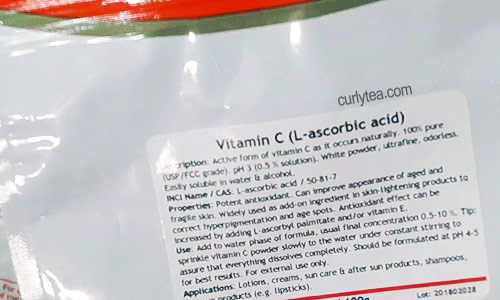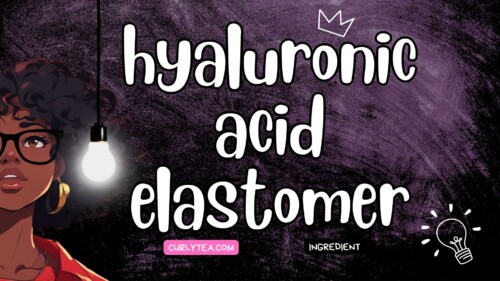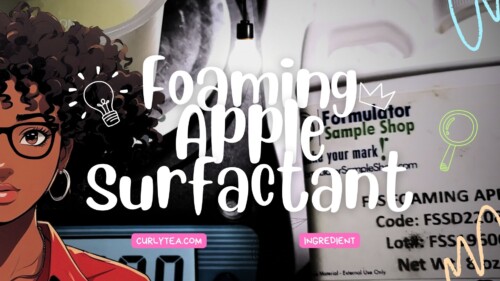Vitamin C (L-ascorbic acid)

Vitamin C (L-ascorbic acid)
INCI: L-ascorbic acid
L-ascorbic acid is the active form of Vitamin C (Vit. C) in nature. Vitamin C is a well-known antioxidant which has been used for years to improve the appearance and the tone of skin. It’s very important for “collagen synthesis”.
L-ascorbic acid, known as the most potent form of Vit. C, is actually one of many forms of the antioxidant. It’s also the most fragile and the hardest form of Vit. C to preserve for long term use.
Vitamin C is best known for helping with hyper-pigmentation (dark spots) on the skin. It’s said to protect against free radicals which can cause skin to look dull and dry, and it’s thought to help repair damaged skin after a sunburn.
[junkie-alert style=”white”] [icon name=”bullhorn” class=”” unprefixed_class=””] Become A Member[/junkie-alert]
In addition to these benefits, reports claim “you may find that fewer long-term scars form” if you use topical Vit. C on cuts/wounds. I have no direct experience with this effect though.
Many claim acne issues can be improved with the use of topical L-ascorbic acid. Acne scars are said to be greatly improved with the use of Vitamin C-containing products.
But what about collagen synthesis? Well, collagen is necessary for firm skin. It’s one of the things which creates “plump”, non-saggy skin. As we get older, collagen production can slow dramatically which leads to sagging skin and an inability for skin to stretch. Since it’s very important for collagen production, using it can help it’s appearance over time.
This form of L-ascorbic acid, however, is fragile! Making a simple water-based “serum” is easy. Making it last for more than 3 or 4 days is the difficult part.
Dissolved Vitamin C degrades from sunlight, heat, air…looking at it hard. No, that last one was a joke. But seriously, L-ascorbic acid, the most effect form, is sensitive to everything. Just remember that when it oxidizes (turns yellow or yellowish), it’s no longer effective.
[junkie-alert style=”yellow”] TIP: If you’re using this form of Vitamin C, never make more serum than you can use up in 3 days. Stick to small amounts, like 15 ml (about half an ounce). [/junkie-alert]
The minute your Vit. C serum starts to turns yellow by itself it should be discarded immediately. Some say a serum which has turned yellow may actually cause skin problems.
A simple serum or cream made using this version of Vitamin C should be refrigerated, but refrigeration may not fully insure it against rancidity either.
Add it directly into the water first before anything else when formulating with the powdered form. That way, nothing else will interfere with it. It also may not dissolve immediately without some form of agitation.
[junkie-alert style=”grey”]
FORMULATION TIPS
1. Add to the water phase
2. Sprinkle it into water slowly while constantly stirring
3. Final pH of your product should be between 4-5* according to makingcosmetics.com (see my note)
4. Do not neutralize to a pH of 7. Raising the pH of this form of Vitamin C can render it useless
5. Can be used in lotions, creams, after-sun care items, shampoos, makeup
6. Antioxidant effect is increased with the use of Vitamin E [/junkie-alert]
But…so… how can these companies create, package and ship C serums that sit on the shelf for months and months at a time? Well, the manufacturers use a combination of preservation techniques, including the use of different forms of Vit. C.
A number of forms of Vit. C may be less potent than l-ascorbic acid but last longer. They include but aren’t limited to:
- ascorbic acid
- ascorbyl glucoside
- sodium ascorbyl palmitate
- sodium ascorbyl phosphate
- magnesium ascorbate
- calcium ascorbate (buffered vitamin c)
- potassium ascorbate
- ascorbyl palmitate
- magnesium ascorbyl phosphate
- ascorbyl 2-phosphate 6-palmitate
Those forms of Vitamin C were developed mostly for two reasons: (1)to decrease irritation to sensitive skin, and (2)to create a product that resists oxidation as it sits on store shelves.
Manufacturers also use additional ingredients like Ferulic acid which helps preserve the Vitamin C. Ferulic acid, however, DOES NOT dissolve in water. It should be dissolved in something like alcohol first before mixing with the L-ascorbic acid.
Each one of these forms of Vitamin C work at different pH levels. Typically, the more neutral the pH, the less room there is for irritation to sensitive skin. For example, magnesium ascorbyl phosphate works well at pH 7. This can be less irritating to sensitive skin than ascorbic acid, which needs a pH of about 3 to be most effective.
As stated earlier, the most effective form of Vit. C is said to be L-ascorbic acid which works best at a pH of around 3.
In addition to all this, creams and serums using L-ascorbic acid at anything less than 10% may not be as effective as you like, while anything above 20% may be way too harsh. You might want to keep your Vitamin C usage between 10% and 20% of your recipe for optimal effectiveness.
*Many other sources I’ve read says a pH of 3 is optimal
Related
https://www.makingcosmetics.com/Vitamin-C-L-ascorbic-acid_p_321.html
https://www.scargenix.com/blogs/skin-science/which-form-of-topical-vitamin-c-is-the-best
https://www.positivehealthwellness.com/beauty-aging/benefits-topical-vitamin-c-skin-use/
https://www.livestrong.com/article/1005360-topical-vitamin-c-serum-benefits-concerns/
https://www.nutriadvanced.co.uk/news/confused-about-the-different-types-of-vitamin-c/
http://thebeautybrains.com/2014/05/which-kind-of-vitamin-c-is-best-for-skin-the-beauty-brains-show-episode-31/



